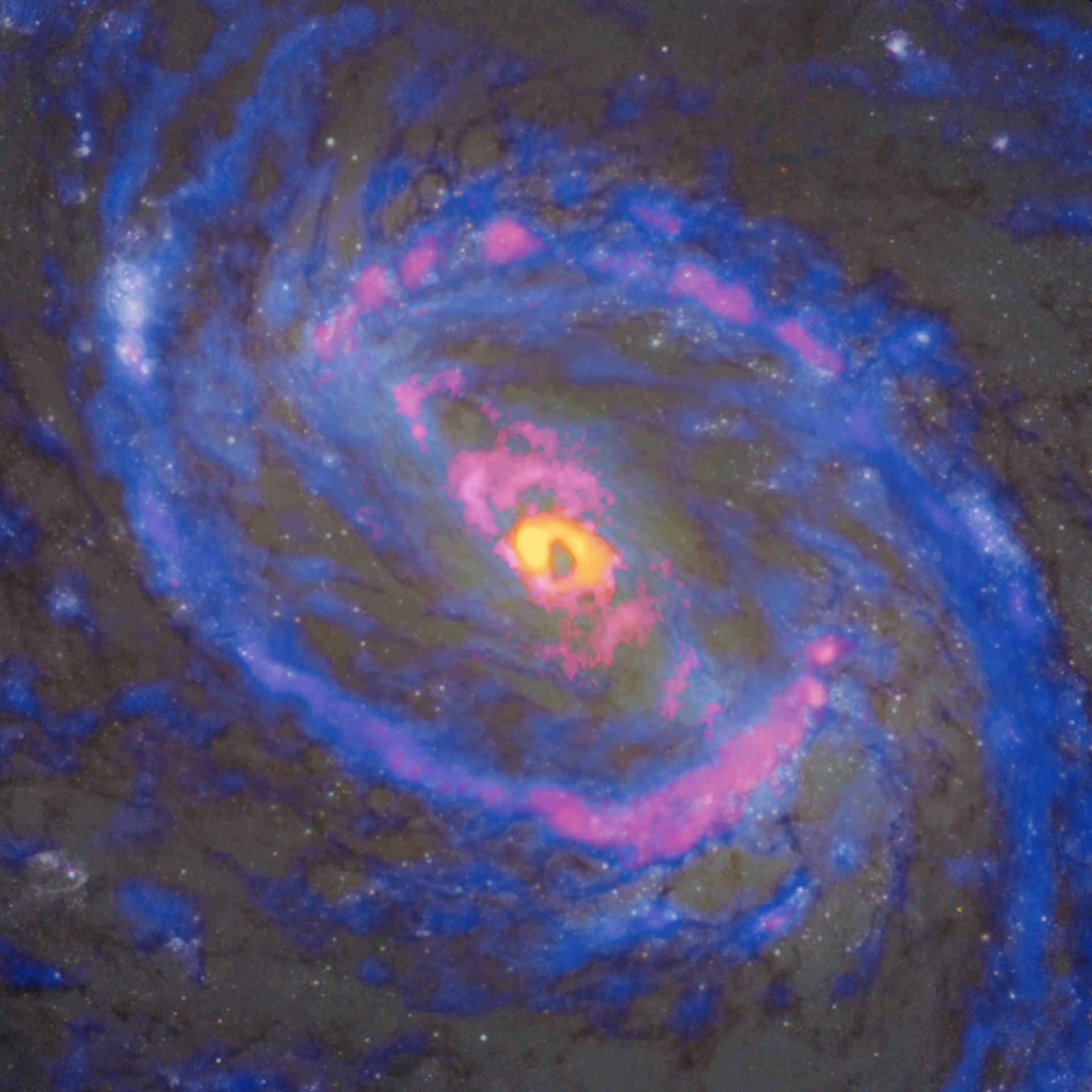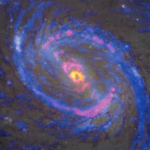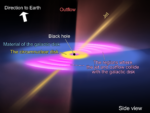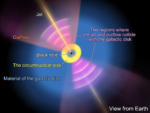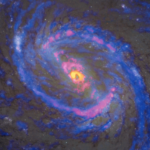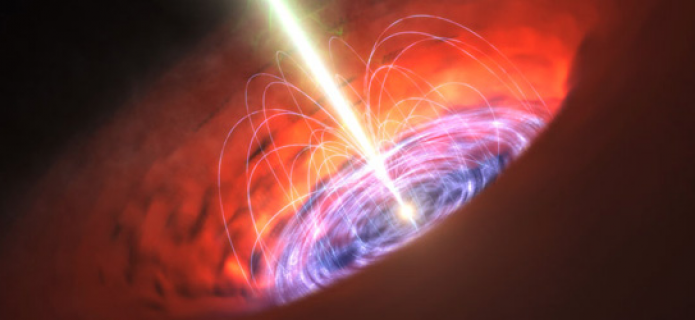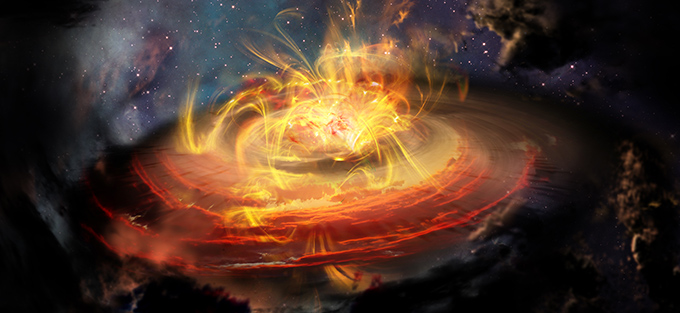Dancing with Black Holes: ALMA's Deep Dive into Active Galactic Nucleus's Stellar Orchestra
Unraveling the cosmic ballet, researchers harness the power of ALMA to illuminate the intricate interplay between supermassive black holes and the birth and death of stars in NGC 1068
Using the Atacama Large Millimeter/submillimeter Array (ALMA), an international research team led by Toshiki Saito from the National Astronomical Observatory of Japan (NAOJ) and Taku Nakajima from Nagoya University, Japan, delved into the mysteries of NGC 1068 (M77), an active galactic nucleus approximately 51.4 million light-years from Earth, located in the direction of the constellation Cetus. The primary aim was to gain comprehensive insights into the two-dimensional distribution of interstellar molecular gas in the 3 mm wavelength band.
Through advanced machine learning 1 techniques, the researchers analyzed the chemical properties of the active galactic nucleus to decode the physical states they represent. Their exploration led to a remarkable discovery: a significant outflow of molecular gas, potentially birthed by a bipolar jet expelled from a supermassive black hole at the galaxy's core. This outflow appears to stem from a shock wave zone where the jet interacts with the galactic disk, subsequently escalating surrounding temperatures.
This fervent jet activity near the galactic heart seems to be rewriting the very fabric of the molecular gas - the foundational building blocks for stars. In doing so, it could be hampering the emergence of new stars. This revelation paints a vivid picture of the dynamic choreography at play in the core of NGC 1068, offering valuable insights into the multifaceted relationship between supermassive black holes and the evolution of galaxies.
Many galaxies harbor an active supermassive black hole at their center. This colossal entity acts as a prodigious engine, emitting vast quantities of energy, giving birth to what is termed an Active Galactic Nucleus (AGN). Comprehending how this galactic nucleus, powered by the immense black hole, influences neighboring interstellar material, especially its role in either fast-tracking or impeding the genesis of new stars, is pivotal for understanding galaxy evolution. However, the dense cloaks of gas and dust often shroud the central regions of AGNs, posing challenges for even the most potent telescopes in the optical and infrared wavelength bands. But ALMA's ability to observe longer wavelengths like millimeter and submillimeter waves, which are less prone to dust absorption, grants it a distinctive edge. This capability allows for an unobstructed gaze into the inner sanctum of the galactic nucleus.
The study recalls previous efforts in observing the central core region of NGC 1068 (M77), especially between 2007 and 2012 when observations utilized the 45-meter radio telescope at the Nobeyama Radio Observatory (NRO) of NAOJ. While those efforts bore fruit, revealing the presence of various molecules, they fell short of providing a granular view of the distribution of molecular gas and structural nuances surrounding the central core due to the limitations in spatial resolution.
Now, under the leadership of Assistant Professor Toshiki Saito of the NAOJ ALMA Project and Assistant Professor Taku Nakajima, the international research collective has transcended previous limitations by employing ALMA for a line survey close to NGC 1068's central core. This approach, enriched by ALMA's inherent properties, allowed for a clear imaging of key structures within the galaxy. Among the notable observations, the team successfully conducted an 'imaging line survey' that visualized the distribution of all detected molecules without any frequency bias.
The insights gleaned from this endeavor are manifold. Not only did the researchers identify 23 significant molecular emission lines, but they also observed stark differences in molecular concentration in various parts of the galaxy. For instance, while the inner sanctum, directly under the influence of the supermassive black hole, displayed heightened concentrations of certain molecules, others, previously believed to be abundant, were less prevalent when observed through ALMA's high-resolution lens.
The observations gathered through this study hold profound implications. The patterns suggest that the black hole's sway heats molecular gas to soaring temperatures, potentially propelled by shock waves. Delving deeper into this phenomenon, the team uncovered a distinct structure wherein a certain type of molecular gas expands in two directions. This configuration, analyzed using machine learning techniques, aligns with the bipolar jet emerging from a supermassive black hole, as revealed in prior studies.
The impact of these jets and outflows is vast. Accompanied by powerful shock waves, they radiate intense ultraviolet and X-rays, creating environments that are hostile to typical interstellar molecules, the quintessential building blocks of stars. Thus, the destruction of these molecules near the galactic center, where they significantly influence star formation, could effectively halt the birth of new celestial entities. This groundbreaking study offers the first chemical-evidence-backed argument that a galaxy's central supermassive black hole might thwart its evolutionary trajectory.
Reflecting on the journey leading to these revelations, Toshiki Saito notes, “Initially, observing molecules in the vicinity of such a jet was considered challenging due to their destruction. However, thanks to ALMA's high sensitivity, high resolution, and the PCA technique 2, we successfully detected the molecular gas outflow associated with the jet and elucidated its chemical properties. This discovery that the supermassive black hole's activity at the galaxy's center hinders its growth is of great significance.” Taku Nakajima encapsulates the endeavor, stating, “Using astrochemistry to investigate the properties of celestial objects is a strong point of Japanese research groups. This marks the first imaging line survey of an AGN that provides insights into the extreme environment at the galaxy's center. We've demonstrated that the combination of line survey observations with ALMA and machine learning analysis is highly effective for comprehending the physical and chemical properties of active galaxies.”
Additional Information
These works were supported by NAOJ ALMA Scientific Research grants No. 2017-06B, 2018-09B, 2020-15A, 2021-18A, and JSPS KAKENHI grants (JP15K05031, JP17H06130, JP18K13577, JP20H00172, JP20H01951, JP21K03632, JP21K03634, JP21K03547, JP22H04939).
One observational result was published by Saito et al. as “AGN-driven Cold Gas Outflow of NGC 1068 Characterized by Dissociation-sensitive Molecules” in The Astrophysical Journal on August 23, 2022 (DOI: 10.3847/1538-4357/ac80ff), and another was done as an online paper on September 14, 2023 and will be published by Nakajima et al. “Molecular Abundance of the Circumnuclear Region Surrounding an Active Galactic Nucleus in NGC 1068 based on Imaging Line Survey in the 3-mm Band with ALMA” in The Astrophysical Journal (DOI: 10.3847/1538-4357/ace4c7).
This text is based on the original Press Release by the National Astronomical Observatory of Japan (NAOJ), an ALMA partner on behalf of East Asia.
The Atacama Large Millimeter/submillimeter Array (ALMA), an international astronomy facility, is a partnership of the European Organisation for Astronomical Research in the Southern Hemisphere (ESO), the U.S. National Science Foundation (NSF) and the National Institutes of Natural Sciences (NINS) of Japan in cooperation with the Republic of Chile. ALMA is funded by ESO on behalf of its Member States, by NSF in cooperation with the National Research Council of Canada (NRC) and the National Science and Technology Council (NSTC) in Taiwan and by NINS in cooperation with the Academia Sinica (AS) in Taiwan and the Korea Astronomy and Space Science Institute (KASI).
ALMA construction and operations are led by ESO on behalf of its Member States; by the National Radio Astronomy Observatory (NRAO), managed by Associated Universities, Inc. (AUI), on behalf of North America; and by the National Astronomical Observatory of Japan (NAOJ) on behalf of East Asia. The Joint ALMA Observatory (JAO) provides the unified leadership and management of the construction, commissioning and operation of ALMA.
Images
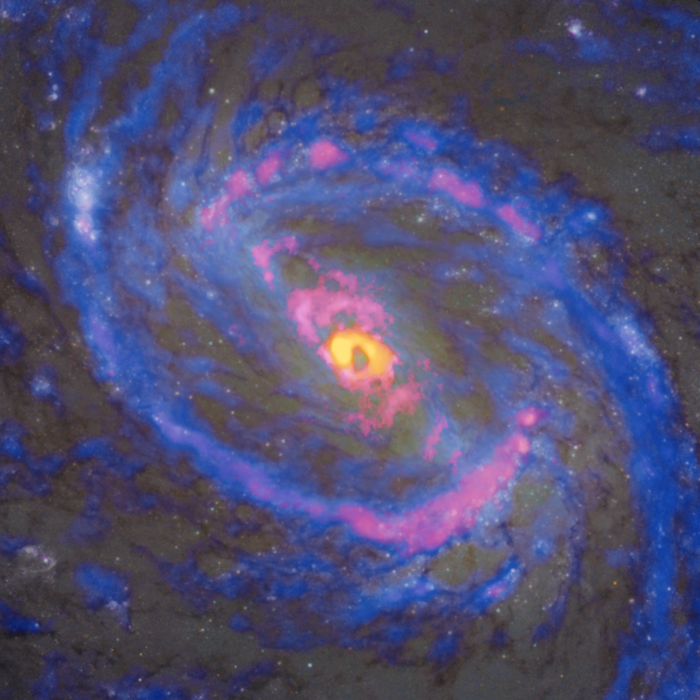
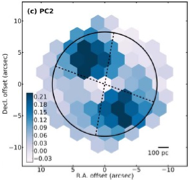
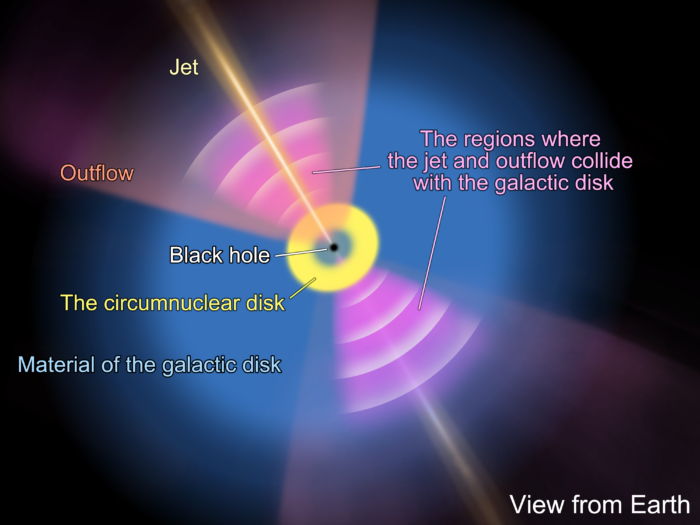
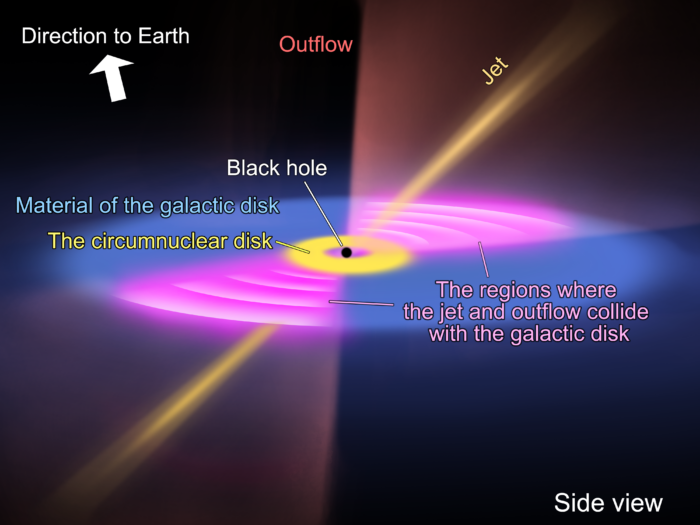
Notes
- Machine learning is a subset of artificial intelligence that enables computers to improve their performance on a task through experience. It involves feeding algorithms with data and allowing them to learn patterns or make predictions without being explicitly programmed for each specific outcome. ↩︎
- Principal component analysis (PCA) is a popular technique for analyzing large datasets containing a high number of dimensions/features per observation, increasing the interpretability of data while preserving the maximum amount of information, and enabling the visualization of multidimensional data. ↩︎
Contacts
-
Nicolás Lira
Education and Public Outreach CoordinatorJoint ALMA Observatory, Santiago - ChilePhone: +56 2 2467 6519Cel: +56 9 9445 7726Email: [email protected] -
Naoko Inoue
EPO officer, ALMA ProjectNational Astronomical Observatory of Japan (NAOJ)Email: [email protected] -
Bárbara Ferreira
ESO Media Manager -
Jill Malusky
Public Information Officer
